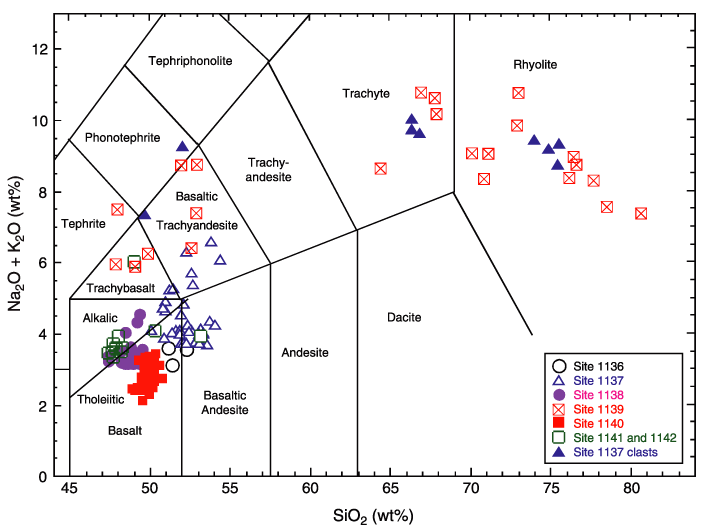
Figure F5. Total alkalis vs. SiO2 classification plot (Le Bas et al., 1986) for igneous basement rocks recovered during Leg 183. Data sources are Neal et al. (2002) for Sites 1136, 1138, 1141, and 1142; Ingle et al. (2002a, 2002b) for Site 1137; Kieffer et al. (2002) for Site 1139; and Weis and Frey (2002) for Site 1140. Solid triangles = samples of volcanic rock that occur as clasts in the Site 1137 fluvial sediments. All data were obtained by X-ray fluorescence at the University of Massachusetts, Amherst. Only samples with loss on ignition <5 wt% are plotted, and Fe2+ is calculated as 85% of the total iron. The dividing line between alkalic and tholeiitic basalt is from Macdonald and Katsura (1964). Important features are (a) the dominance of tholeiitic basalt at Sites 1136 and 1140; (b) basalts from Sites 1137 and 1138 straddle the alkalic/tholeiitic boundary line; (c) igneous clasts in the conglomerate at Site 1137 have diverse compositions ranging from phonotephrite to trachyte and rhyolite; based on 40Ar/39Ar data the ages of these felsic igneous clasts are indistinguishable from the ages of the Site 1137 basalt flows (Pringle et al., 2000); (d) the occurrence of a bimodal alkalic suite, trachybasalt to rhyolite, at Site 1139; and (e) most of the basalts at Sites 1141 and 1142 are slightly alkalic; the trachybasalt is a clast in Unit 2 breccia, and the tholeiitic basaltic andesite is from Unit 6 at Site 1142.


